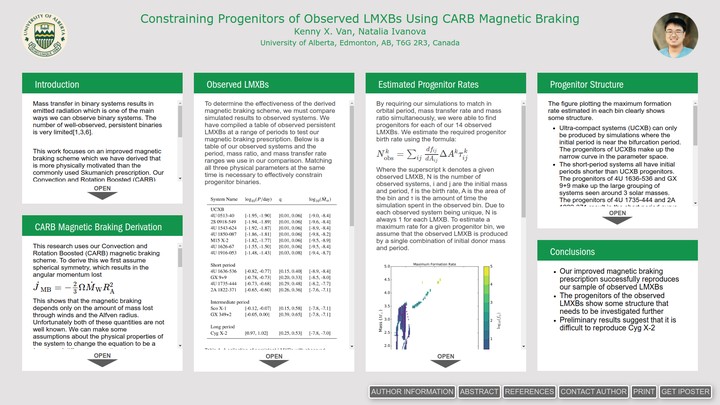Constraining Progenitors of Observed LMXBs Using CARB Magnetic Braking

Abstract
We present a new method for constraining the mass transfer evolution of low mass X-ray binaries (LMXBs) – a reverse population synthesis technique. This is done using the detailed 1D stellar evolution code MESA (Modules for Experiments in Stellar Astrophysics) to evolve a high-resolution grid of binary systems spanning a comprehensive range of initial donor masses and orbital periods. We use our modified magnetic braking scheme the CARB (Convection And Rotation Boosted) magnetic braking prescription. The CARB magnetic braking scheme has been shown to effectively reproduce a sample of well studied persistent LMXBs with observed mass ratios, periods and mass transfer rates. Using the reverse population synthesis technique – where we follow any simulated system that successfully reproduces an observed LMXB backwards, we can constrain possible progenitors for each observed binary. This technique can be applied to any observed LMXB with well-constrained mass ratios, period and mass transfer rate. With the upcoming GAIA DR3 containing information on binary systems, this technique can be applied to the data release and act as an independent method to compare to the results found using normal population synthesis..